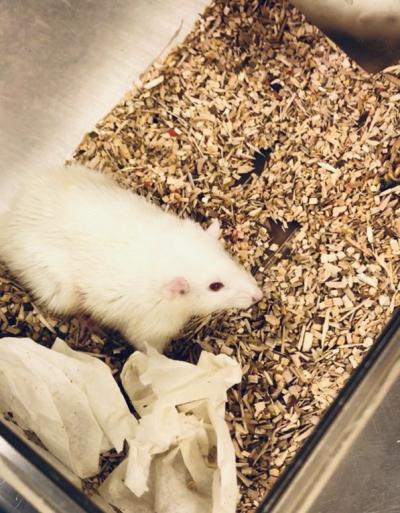Researchers at the University of Pittsburgh School of Medicine have created functional mini livers that contain liver, vascular, and bile duct cell types generated from human skin cell-derived induced pluripotent stem cells (iPSCs). The mini livers produced tissue structures similar to those in human livers, and secreted bile acids and urea. The human mini livers survived for four days when transplanted into immunodeficient rat recipients, and secreted human liver proteins that could be detected in the animals’ blood.
“Seeing that little human organ there inside the animal—brown, looking like a liver—that was pretty cool,” said Alejandro Soto-Gutierrez, MD, PhD, associate professor of pathology at Pitt and faculty member of both the McGowan Institute for Regenerative Medicine and the Pittsburgh Liver Research Center. “This thing that looks like a liver and functions like a liver came from somebody’s skin cells.” Soto-Gutierrez is senior author of the team’s published paper in Cell Reports, which is titled, “Assembly and Function of a Bioengineered Human Liver for Transplantation Generated Solely from Induced Pluripotent Stem Cells.”
Approximately 30 million people in the United States have liver disorders and about 40,000 will progress to end-stage liver disease, which is responsible for more than 30,000 deaths in the United States every year, the authors wrote. The only curative treatment for terminal liver failure is to give the patient a liver transplant, but shortage of donors, costs, and the need for lifelong immunosuppression are major limitations. One potential answer would be the ability to create a new liver from a patient’s cells in the lab, and then transplant the lab-grown organ back into the patient. “Autologous bioengineered livers derived from the patient’s own cells could change this equation by providing unlimited availability of grafts whose use would not require the need for immunosuppression,” the researchers stated.
The Pitt team recently reported generating liver grafts that combined genetically engineered human iPSCs differentiated into liver cells, and supporting primary human cells. However, they commented, “ … bioengineering of an entire liver graft using human iPSC-derived cells for transplantation has not been described.” For their current study, the researchers went another step. They generated the mini livers by reprogramming human skin cells into stem cells, and triggering the stem cells to redifferentiate into the different types of liver cells, which they then seeded into a rat liver that had all of its own cells stripped out. The biofabricated human mini livers were effectively structured with human iPSC-derived hepatocytes, and included a vascular system populated with hiPS-endothelial cells, and a bile duct network that incorporated human iPSC-biliary epithelial cells. The creation of these mini livers was achieved in less than a month.

Soto-Gutierrez is optimistic that the research will represent a useful tool, as well as a stepping-stone towards growing replacement organs in a lab. “The long-term goal is to create organs that can replace organ donation, but in the near future, I see this as a bridge to transplant,” Soto-Gutierrez said. “For instance, in acute liver failure, you might just need a hepatic boost for a while instead of a whole new liver.”
There are significant challenges to overcome, he noted, including long-term survival and safety issues. “Future studies should concentrate on procedures to allow continued vascular development using, for instance, nanoparticles and growth-factor-hydrogel modification of acellular scaffolds that have proved to be a successful approach to extend the life of bioengineered lungs after transplantation,” the authors stated. “Moreover, future studies should investigate further maturation of the human iPSC-derived liver grafts in vivo and establishment of bile canaliculus and hepatic artery flow. The strategy shown here represents a significant advance toward our understanding of the production of bioengineered autologous human-liver grafts for transplantation.”



